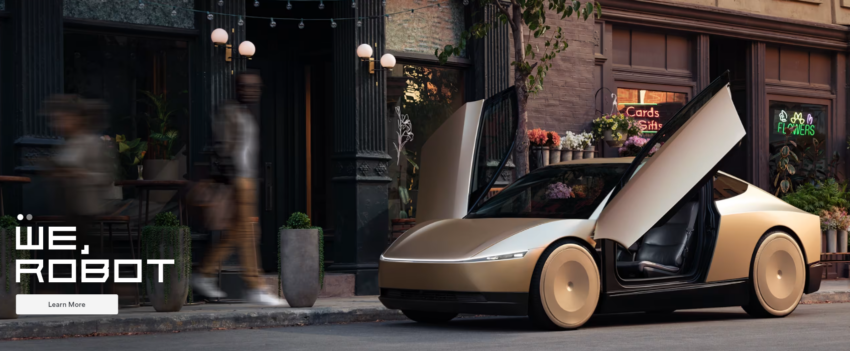Tesla’s long-awaited robotaxi unveiling on Thursday evening brought excitement, innovation, and a sharp dose of market reality. The event introduced the affordable Cybercab, promising autonomous rides at under $30,000. Tesla’s vision included integrating this technology into existing models like the Model 3 and Model Y, particularly in states like Texas and California.
- Market Response: Despite the futuristic unveiling, Tesla lost nearly $100 billion in market value, reflecting investor skepticism over the feasibility of its robotaxi plans.
- Competitor Pressure: Companies like Waymo and GM’s Cruise are ahead in deploying autonomous vehicles, adding pressure on Tesla to deliver on its FSD promises.
- Regulatory Challenges: Tesla’s autonomous ambitions face scrutiny from U.S. safety regulators, putting the company’s timelines at risk of further delays due to potential legal hurdles.
- Diversification Strategy: While Tesla expands into AI and robotics, its core automotive business remains under pressure to turn autonomous driving into a viable, revenue-generating service.
However, despite these ambitious announcements, Tesla shares took a dramatic hit, losing nearly $100 billion in market capitalization. This drop in investor confidence highlights a critical issue for Tesla: while the company continues to push the boundaries of artificial intelligence and robotics, the market remains skeptical about the practicality and timeline of these advancements.
Autonomous Dreams vs. Market Reality
The core of Tesla’s challenge lies in Full Self-Driving (FSD) technology, which remains in development despite years of bold predictions. Seth Goldstein, an equity strategist at Morningstar Research, pointed out the importance of proving the reliability of FSD within Tesla’s current fleet before fully committing to robotaxis. Competitors like Waymo and GM’s Cruise have already made headway, deploying autonomous vehicles in specific urban areas. Tesla, on the other hand, has repeatedly extended its timelines for a fully autonomous fleet, frustrating both investors and consumers.
Nevertheless, Elon Musk remains confident. He believes Tesla’s focus on artificial intelligence and robotics, including the unveiling of humanoid robots during the event, will pay off in the long run. This optimism, however, contrasts with ongoing regulatory scrutiny. The U.S. National Highway Traffic Safety Administration (NHTSA) is actively investigating Tesla’s FSD and Autopilot systems due to safety concerns, particularly after multiple incidents involving these technologies.
Regulatory Hurdles and Investor Skepticism
As Tesla pursues its autonomous vision, it must navigate a growing landscape of regulations and legal challenges. Critics argue that the company has been too optimistic in its predictions for widespread autonomous vehicle deployment. With competitors already gaining a foothold in the market, Tesla must prove that its technology can meet the rigorous safety standards required for public use.
At the same time, government oversight could either help or hinder Tesla’s progress. While innovation is critical to staying ahead of rivals, excessive regulation could slow down the rollout of the robotaxi fleet, raising costs and pushing timelines even further. This balancing act between technological ambition and regulatory requirements will determine Tesla’s success in the autonomous vehicle race.
A Shift Beyond Cars
While the focus remains on robotaxis, Tesla’s broader strategy aims to diversify beyond electric vehicles. The company’s push into robotics and AI with the Optimus humanoid robot demonstrates that Tesla is looking far ahead. Yet, the automotive division remains the backbone of the company, and the market is watching closely to see if Tesla can turn its visionary promises into practical, revenue-generating realities.
In the short term, investor confidence will rely heavily on Musk’s ability to meet tangible milestones and address regulatory concerns. The unveiling of the Cybercab might be an exciting step forward, but without proven results, the market will continue to respond with caution.

